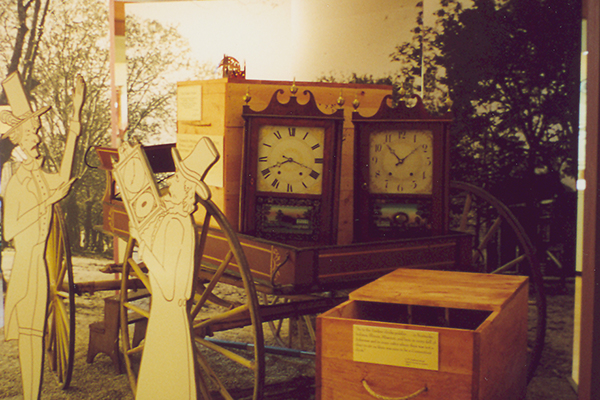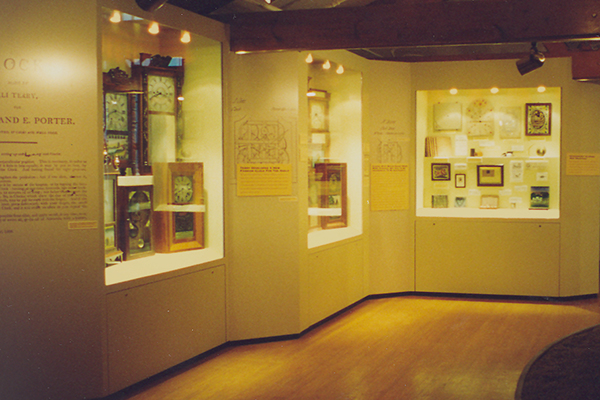Connecticut Clockmaking &
The Industrial Revolution
American Clock & Watch Museum
The Industrial Revolution
American Clock & Watch Museum
The museum's main permanent exhibit is "Connecticut Clockmaking and the Industrial Revolution." At the beginning of the 19th century almost everything was made by hand and almost nothing was made by machine. By the end of the 19th century most items were made by machine and practically nothing was made by hand. The American clock industry played an important role in that transformation often called "The Industrial Revolution." At the end of the 18th century clocks and watches were made in America and in Europe one at a time by the local clockmaker. The time consuming process of molding parts from brass, filing them and fitting them together made these timekeepers expensive. Eli Terry a master clockmaker from Terryville, CT experimented with the production of wooden clock movements and in 1807 he received a contract to produce 4,000 clock movements in 3 years. Using local water power to run his machinery, local carpenters, Silas Hoadley and Seth Thomas, to produce the parts, and the concept of interchangeable parts, he completed the contract on time. His movements were the first complicated mechanical mechanisms with truly interchangeable parts.

Exhibition Entrance and Terry Clock Shop with scrim effect revealing shop interior / object theater.



